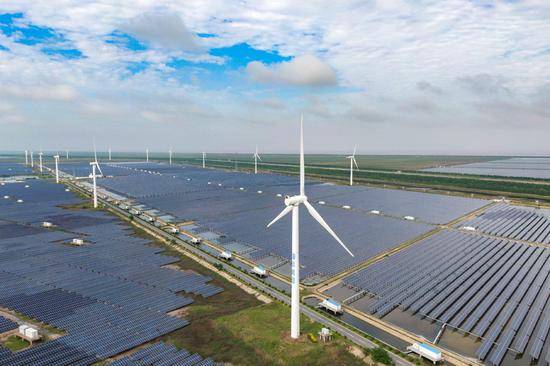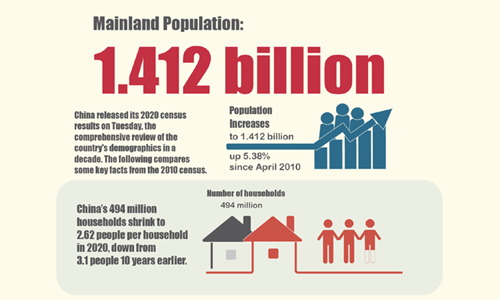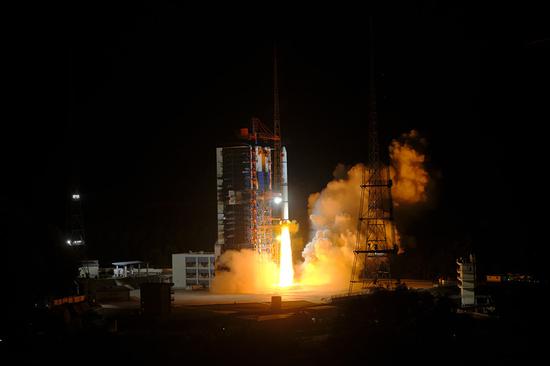U.S. goods exports to China rebounded strongly in 2020-growing by nearly 18 percent-propelled by the Asian country's market openings, tariff exclusions and early recovery from the pandemic, the U.S.-China Business Council said on Wednesday.
But U.S. services exports to China, which include travel, education and financial services, declined 3 percent in 2019, the first time in more than a decade that the category has fallen, a clear indicator that strained relations between the two countries took a toll on cross-border exchanges.
Notably, U.S. trade with the rest of the world contracted by 15 percent, according to the USCBC, a trade association representing more than 200 U.S. companies doing business in China.
"Combined exports of goods and services to China still supported nearly 1 million U.S. jobs in 2019, the most recent year for which data are available," the USCBC said in the 2021 State Export Report.
"These exports mean support for American businesses and families, which could not be more important right now," said USCBC President Craig Allen.
"Ultimately, though, the best remedy for boosting trade and creating more U.S. jobs is for both the United States and China to permanently remove tariffs," Allen said.
Ministry of Commerce spokesman Gao Feng said China's stance is clear: Increasing tariffs unilaterally is not in the interests of China, the U.S. or the rest of the world.
The essence of China-U.S. economic and trade relations is mutual benefit and win-win results, he said at a news conference in Beijing on Thursday.
The two sides should resolve each other's legitimate concerns through dialogue and consultation on the basis of mutual respect and equal treatment, he added.
Gao denied the claims made in a Wall Street Journal report that China was considering changing the head of its side in the China-U.S. comprehensive economic dialogue.
The annual report, which chronicles each U.S. state's trade with China over the past decade and details how many jobs that exports supported, offers a clear clue on how soured relations, including the lingering trade war, have impacted trade between the world's top two economies along with job creation in the U.S..
For example, the strained relations between the two countries, a slowdown in visa processing and a decline in the number of Chinese students and visitors in the United States crimped exports of services to China even before COVID-19 led to a pause for the travel industry.
Visiting Chinese students have been a significant boost to university revenues across the U.S.. For three states-California, New York and Massachusetts-these students contribute more than $1 billion in tuition, fees and local spending, according to the report.
But in 2019, exports of education-related travel alone fell by about 3 percent, or $422 million, negatively affecting school budgets across the United States.
While most data in the report were updated to 2020, those for services lag by a year and do not include the COVID-19 pandemic's effects.
Overall, China fell from the U.S.' third- to fourth-largest services export market, but it has remained the fastest-growing destination over the past decade, as it has been for U.S. goods exports.
Since 2011, U.S. services exports to China have more than doubled, registering the highest average annual growth rate of 11.6 percent, the report said.
By comparison, the top two markets of the United Kingdom and Canada grew by an average of less than 4 percent over the last 10 years, it said. Ireland now takes the third spot in U.S. service export growth.
With regard to exports of goods, China remained the third-largest goods export market of the U.S. in 2020, following Canada and Mexico.
"The stark contrast between the growth in exports to China and that to the rest of the United States' top trading partners in 2020 can largely be attributed to China's tariff exclusions and early economic recovery post-COVID-19," the USCBC said in the report.
It said that China's tariff-exclusion process, which began in March 2020, facilitated a more normal flow of goods from the U.S..
The tariff exclusion, together with efforts by China to further open its markets and increased market demand following its robust recovery from the pandemic, helped to stoke U.S. exports, according to Allen.
In 2019, the U.S. exported just under $105 billion in goods to China. Last year, that number jumped to $123 billion, the second-highest total in a decade.
The USCBC said exports to China benefit nearly all U.S. states and industries, with many states also generating "substantial economic value" from exports of services.
In late October, U.S. Congressman Rick Larsen, who is from the Pacific Northwest state, said of the trade war's impact on his constituents: "When the U.S.-China relationship sneezes, Washington state gets a cold."
Asked to comment on the lawmaker's remarks, the USCBC's Allen said Congress regulates tariffs under the U.S. Constitution.
"The tariffs kill jobs, kill productivity and are bad for the American economy and ... they should be removed, and we're hopeful that Congress people who see their job numbers in their states will support the administration" in the negotiating process with China on market access and getting rid of those tariffs, Allen told China Daily.
The phase-one trade deal that Beijing and Washington signed on Jan 15, 2020, does not eliminate many of the tariffs already put in place by both sides, including the 25 percent import taxes on $250 billion in Chinese goods that started in 2018.
"We continue to urge both governments to fully implement the agreement, to fast-track to future negotiations, and to address the remaining barriers and also to remove or draw down as much as possible the tariffs," Allen said.
He also said China has made "significant progress" in implementing the phase-one deal in terms of trade and regulatory changes, resulting in "tangible benefits" for U.S. business.


















































